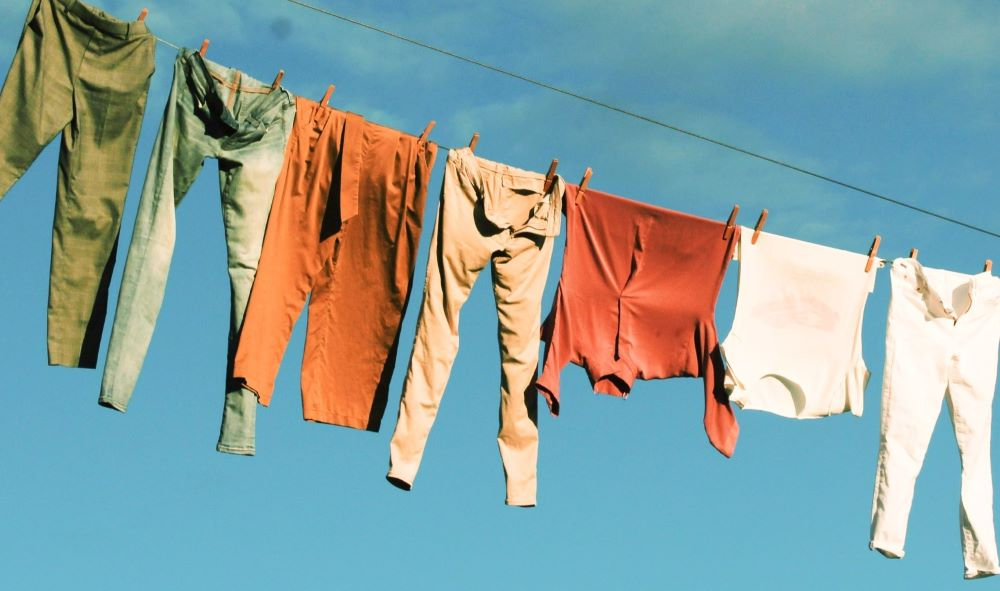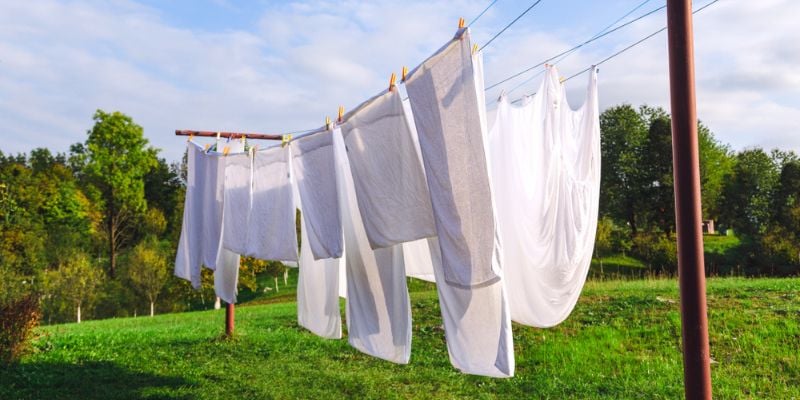Drying clothes outdoors has been practiced for centuries, and many people continue to do it today. Using sun, wind, and fresh air to dry garments offers a return to a simpler, sustainable method. But like any method, it has both benefits and drawbacks. Below, we explore the advantages and disadvantages of hanging laundry outside.
Advantages of Outdoor Drying
1. Energy Savings and Lower Bills
Perhaps the greatest appeal of outdoor drying is that it requires no electricity. You save on energy costs by avoiding the use of electric dryers — a practical benefit particularly in sunny, windy climates. Over time, those savings can accumulate significantly.

2. Eco-Friendly and Reduced Carbon Footprint
Dryers consume considerable energy and contribute to household emissions. By relying on natural air and sunlight, you reduce demand on power plants and shrink the carbon footprint associated with laundering. This makes outdoor drying a greener choice for environmentally minded households.
3. Fresh Scent and Natural Disinfection
Clothing dried outdoors often carries a fresh, clean smell that many find pleasant. Sunlight also acts as a natural disinfectant, helping to reduce bacteria and some odor-causing microbes on fabrics. That ultraviolet exposure can give garments a cleaner feel without chemical intervention.
4. Gentler on Fabrics
Dryers can be harsh on delicate garments, causing shrinkage, fading, or wear over time. Air drying is a gentler alternative: it avoids high heat and mechanical tumbling, thus extending the life of clothing made from organic fibers, knits, lace, or embroidered fabrics.
Disadvantages and Challenges
1. Time and Weather Dependence
Outdoor drying requires favorable weather. Rain, excessive humidity, or overcast skies can delay the process significantly. In some regions or seasons, drying outside might become impractical for days at a time, forcing reliance on indoor drying methods.
2. UV Damage and Fading
While sunlight can disinfect, its ultraviolet rays can also damage textiles. Prolonged exposure may fade colors, weaken fibers, or degrade elastic. Dark, vibrant garments are especially vulnerable to this kind of wear if left in direct sun for long periods.
3. Pollutants, Dust, and Pollen
Drying clothes outdoors exposes them to environmental elements. Dust, pollen, insect droppings, bird droppings, and airborne pollutants can settle on fabrics, leading to the need for re-washing. In urban or industrial areas, airborne particles may stain or degrade certain materials.
4. Theft, Stains, and Unexpected Mishaps
Outdoor laundry is vulnerable to theft, accidental staining, or damage from animals. Wind gusts may carry garments away or cause them to brush against dirty fences or trees. Rain, bird droppings, or tree sap can also mar clean clothes prematurely.
5. Space and Infrastructure Requirements
Not everyone has access to a backyard, balcony, or communal outdoor line. In dense urban living or apartments, outdoor drying may be impractical. Proper lines, poles, or racks may need installation, which might not be feasible due to space or aesthetic restrictions.

Tips for Better Success
To mitigate some drawbacks, consider these strategies:
- Choose partial shade or angled sunlight to reduce UV exposure.
- Use clothespins or fasteners to secure garments.
- Position your drying area away from busy roads or trees to reduce dust or sap exposure.
- Bring clothes inside if rain is imminent, or invest in a retractable line or foldable rack.
- Rotate garments periodically to ensure even drying.
Is Outdoor Drying Right for You?
Deciding whether to dry clothes outside depends on your climate, living situation, and priorities. If you have access to an outdoor line, live in a region with plenty of sun, and value energy savings and fabric longevity, it’s a strong choice. But if weather is unpredictable, or you lack outdoor space, it may become a source of frustration. For many, combining methods proves ideal: use outdoor drying when conditions allow, but retain an indoor or electric backup for cloudy days or delicate items. This hybrid model offers flexibility while maximizing the strengths of both approaches. Ultimately, outdoor drying connects us with nature, reduces energy use, and can improve garment care — provided we accept and plan around its limitations.

















